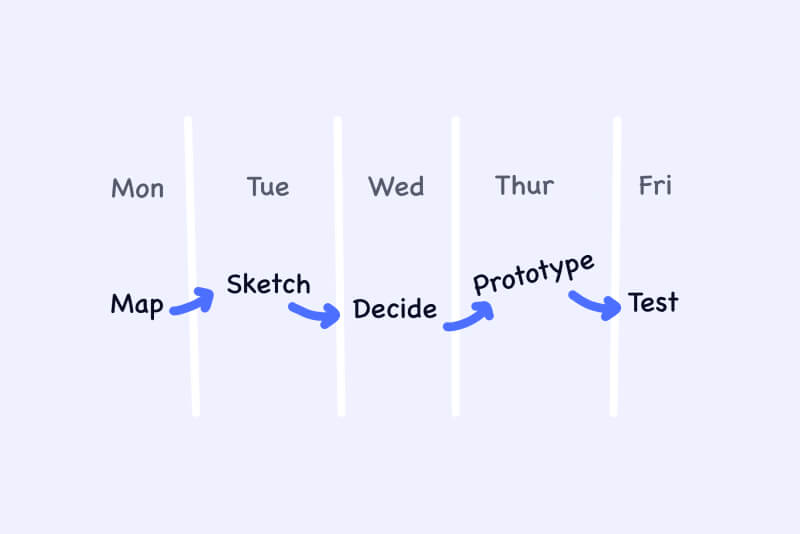Design Sprint
The Design Sprint is a five-day process for quickly answering big challenges through design, prototyping, and testing ideas with customers.

There are two resources that immediately come to mind that I must share with you in regards to how to best use and facilitate a design sprint. Firstly, and obviously, the Sprint book which is a great read and the most comprehensive possible explanation of the design sprint. Secondly, Google's design sprint kit is an excellent online resource which explains the methodology very well and gives various methods for each phase of the process.
There are three scenarios where using a design sprint will be most useful:
- You need direction quickly and speed is necessary
- The problem you are solving is high stakes and the wrong direction would be costly
- You’re stuck and need a new approach to freshen things up
Monday
Monday is for creating a shared knowledge base, understanding the problem, and setting a goal. You should spend the day learning from each other and pin-pointing your focus. There are many methods you could utilise for this first day including Lightning Talks, How Might We’s (HMW), Experience Mapping, and User Interviews.
By the end of the first day you should have your targets set for the week, ready to move into the next day.
Tuesday
Tuesday is the day to get creative and start focusing on solutions to your problem. You can start the day by sharing examples of other great work in the form of Lightning Demos, and discussing how you could draw inspiration from them.
Then it’s time to pick up a pen and start sketching some ideas. Again, there are many methods you could utilise here including Crazy 8’s, or Solution Sketches.
By the end of Tuesday you should have a wide selection of solutions to your problem. At this point, you should also begin recruiting participants for the testing on Friday.
Wednesday
You’ll spend Wednesday evaluating each solution, and deciding which ones have the best chance of achieving your goal. There will be lots of dot voting to decide the idea, or ideas, to take forward into prototyping. You may be able to fit all ideas into a single prototype, or you may decide it is best to create them in separate prototypes.
Then, if you have time, start planning your prototypes for creation tomorrow.
Thursday
Thursday is the day for creating your prototype which will be tested on Friday. Make sure everyone and everything is ready including confirming the schedule, reviewing the prototype, and writing an interview script.
Friday
It’s time to test your idea! By the end of the day you will have either validated your idea, or invalidated it. Either way, you’ve learnt valuable lessons which will ultimately save time and money.